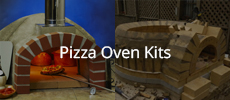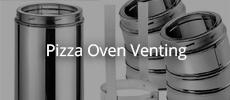Originally posted by Giovanni Rossi
View Post
For example, wasn‘t overly wrapped with the pesto potato pizza. The potato is not my thing, fills space adding calories without actually enhancing the pizza. I love pesto as a base, but thinking to add a little mango and chicken in place of the potato.
I will also play with some Indian and Thai curries on pizza. Spent a large part of my life in India and Thailand, so love that food and think it will go well on pizza.





 . Took just under 2 hours to heat, dome 480C, floor 450C. It was just the right temp so the pizzas didn‘t stick to the floor, or the bases burn. Gave just the right time for the tops to cook without burning the crust. Now I just need to learn to replicate it. I will do 6 more pizzas this afternoon, and curious how long it takes to reheat the oven still hot from last night.
. Took just under 2 hours to heat, dome 480C, floor 450C. It was just the right temp so the pizzas didn‘t stick to the floor, or the bases burn. Gave just the right time for the tops to cook without burning the crust. Now I just need to learn to replicate it. I will do 6 more pizzas this afternoon, and curious how long it takes to reheat the oven still hot from last night.

Leave a comment: